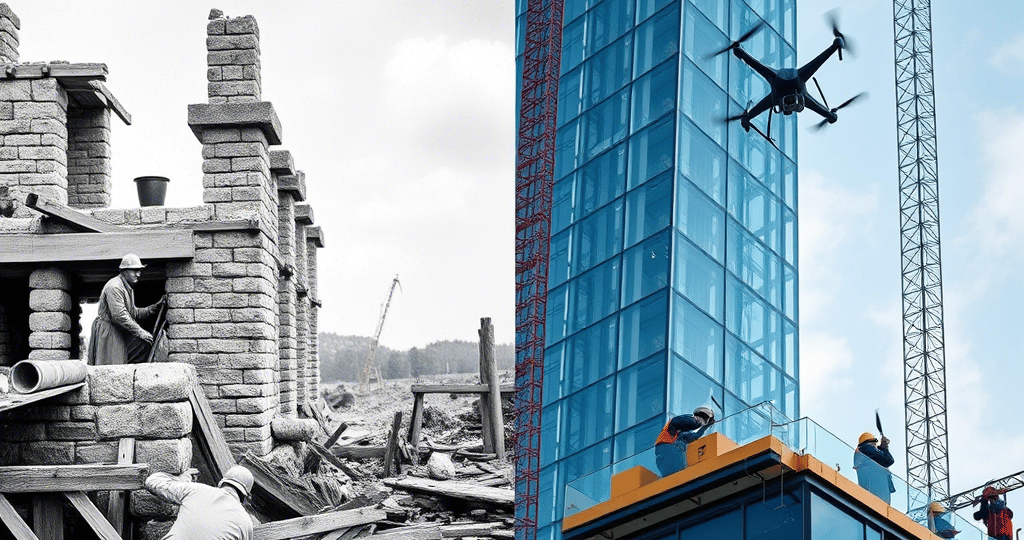Quality and technology IN CONSTRUCTION
delivered with STRAIGHT communication
Contractors: The Underappreciation of Modern-Day Master Builders
Contractors play a crucial role in modern architectural projects, yet they are often undervalued. While architects in the past oversaw the entire construction process, today much of this responsibility falls on contractors. The profession faces numerous challenges, including labor shortages, rising material costs, and stricter regulations. Greater recognition, better contractual conditions, investments in innovation, and professional appreciation are needed worldwide. Without contractors, architectural visions would remain mere blueprints.
CONSTRUCTIONSUSTAINABILITYARCHITECTURE
Toldy Construct
2/18/20253 min read


Contractors: The Underappreciation of Modern-Day Master Builders
Introduction
Contractors, the behind-the-scenes figures of modern architectural projects, play a crucial role, yet they often remain undeservedly in the shadows. As the world increasingly moves towards digitalization and aesthetic design, architects are now primarily designers rather than master builders overseeing the entire project. The once-called master builders, who managed the entire construction process, have become a rarity.
In Hungary, Miklós Ybl and Imre Steindl, in the United States, Louis Sullivan, and in Finland, Alvar Aalto, were architects who not only designed but also actively directed the construction process. In France, Gustave Eiffel was not only the designer of the Eiffel Tower and the Gare de l’Ouest structure but also worked as an engineer and construction manager. In Spain, Antoni Gaudí, the master of the Sagrada Família, continuously modified his plans throughout construction as a pioneer of organic architecture. Meanwhile, in Austria, Otto Wagner, the designer of the Vienna Stadtbahn and the Postal Savings Bank, excelled not only as an architect but also as an active participant in engineering execution.
The Role of Architects: Then and Now
During the Bauhaus era, architects mastered both design and construction. Frank Lloyd Wright was as present on the construction site of the Guggenheim Museum as a conductor leading an orchestra. However, in today’s international projects, architects visit construction sites at most once a month. As a result, contractors bear the burden of turning designs into reality, often facing significant challenges.
The Significance of Contractors – A Battlefield Instead of a Paved Road
Contractors are the true heroes of the construction process. While digital renderings are impressive, without the precision, expertise, and problem-solving skills of contractors, the final result would never match the plans.
On a global scale, contractors face similar issues. One of the biggest challenges in the construction industry is the declining workforce, particularly concerning in developed countries due to an aging labor force. Material prices fluctuate worldwide, influenced by geopolitical situations and supply chain vulnerabilities. Moreover, contractors must not only adapt to local economic and regulatory changes but also to the impacts of climate change.
Global Challenges in the Construction Industry
Contractors worldwide struggle with issues such as labor shortages, low wages, and increasingly complex building regulations. In the United States, contractors must deal with continuously rising material costs and supply chain disruptions. In Europe, the focus on sustainable construction technologies presents new challenges, while in Asia, rapid urbanization creates capacity difficulties.
The Lack of Recognition for Contractors Worldwide
Not only in Hungary but globally, contractors are often overlooked in architectural projects. In many countries, architectural awards are given solely based on design work, while contractors are frequently seen merely as executors. This approach is not only unjust but also risky, as a poorly managed construction process can jeopardize an entire project’s success.
What Can Be Done?
Better contract terms: Contractor agreements should be more precisely regulated, including payment deadlines and quality standards.
Professional recognition: More awards and acknowledgments should be granted for contractor work worldwide.
Workforce training: The education and training of skilled workers must be enhanced as fewer young people enter the construction field.
Regulatory reform: Simplifying and clarifying construction laws can reduce administrative burdens.
Investment in innovation: Automated and digitalized technologies could assist contractors in their work.
Adopting international best practices: Countries like Austria and Switzerland offer examples where construction regulations and innovation strategies ensure sustainability and efficiency. In Austria, beginning a construction project typically requires the involvement of a certified expert, such as a Baumeister or an architect, although specific requirements vary based on project type and size. In Switzerland, architects are responsible for design and construction oversight, ensuring compliance with regulations, though their level of responsibility depends on contractual agreements and local laws.
Addressing the impacts of climate change: Sustainable construction practices, recyclable materials, and energy efficiency play an increasingly important role in the global construction industry.
Conclusion
Without contractors, there are no iconic buildings. The most beautiful blueprints mean nothing if there is no one to build them. The construction industry faces massive global challenges, but contractors remain the biggest casualties. It is time for the industry and society to recognize this and finally appreciate the work they do daily with their hands and expertise. Recognition is not just a matter of fairness—it is an economic necessity. If there is no one to build, then the future’s designs will remain mere paper sketches. Strengthening the sector would not only benefit construction but also the global economy as a whole.
Construction
With over 20 years of experience in general contracting, our company specializes in the flawless execution of unique, bespoke buildings. Our innovative methods and mindset make us stand out in the market.
Our services
Contacts
company@toldyconsult.hu
+36 30 289 2383
© 2024. All rights reserved.
Our WEBPAGES
www.toldyconsult.hu
